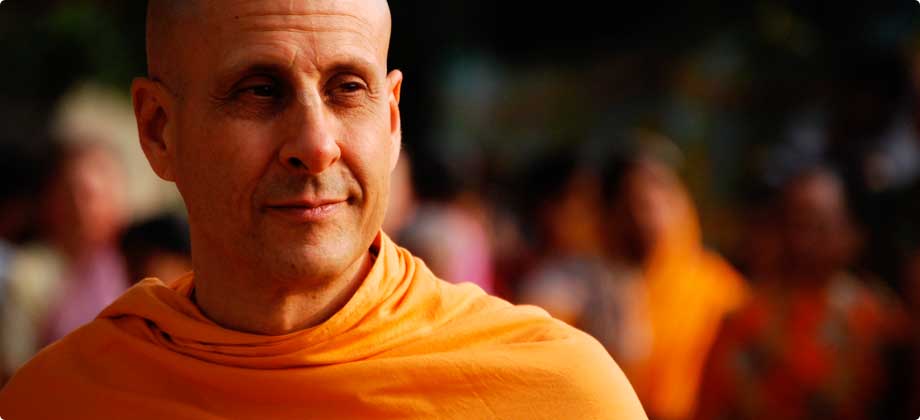
1950-1970: The Early Years
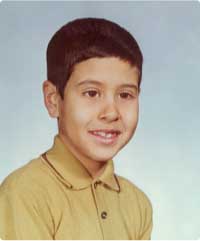
Richard Slavin was born on 7 December 1950 in Chicago to Idelle and Gerald Slavin, who were children of Jewish immigrants from Russia, Lithuania, Poland and Romania. In 1955, he and his family moved to a suburb of Chicago – Highland Park. In 1958, his father opened a dealership selling Ford cars, which did not succeed; however, the car repair shop launched thereafter was quite successful. Despite being well-off, at age 15 Richard chose to work hoping to contribute to his family.
As a child, Richard showed a tendency, which he later called "the traces of my past lives". He did not prefer eating at the table, but while sitting on the floor, as is customary in India. When his parents forbade him to do so, Richard began to eat at the table standing. He hated the sight of meat and eggs, nauseated at its sight, and often vomited after eating meat; something that took him several years to get accustomed to. From an early age, Richard realized that the materialistic way of life will never bring him satisfaction, and was attracted by poverty and simplicity.
Although his parents were not religious, Richard developed an interest in religion and spiritual themes from his early years. At age 13, he passed the rite of bar mitzvah (a Jewish coming of age ritual) and received instructions from the local rabbi about how to pray. On his thirteenth birthday, his elder brother Marty gifted him the debut album of folk-singing trio Peter, Paul and Mary. In their compositions they opposed the war and social injustice, but Richard was particularly impressed by their compositions about God.
In 1965, Richard entered the Deerfield High School, where he excelled in studies and made a lot of friends. He was passionate about wrestling, ending up in his school's sports team and won majority of fights. However, on dislocating his shoulder in a major competition, he decided to leave the sport. In his spare time, along with a couple of friends, he washed cars. Dissatisfied with the conditions of the African Americans and the Vietnam War, he believed in the ideologies of Martin Luther King.
The death of one of his close friends (aged 16) in a car accident made Richard think seriously about the meaning of life. At the same time, following the example of some of his peers, Richard plunged into the hippie counterculture. Keen to understand the deeper meaning of life, he grew long hair and started smoking. In the summer of 1968, a sense of adventure led Richard to make a hitchhiking journey to California. There, he spent the nights on the beaches and visited the then hippie mecca – Haight-Ashbury district in San Francisco.
In 1969, Richard enrolled at the Miami Dade College, where, in search of spiritual experience he resorted to books on religion and philosophy. Completely disillusioned with the materialistic life values of Americans, Richard studied well in college. He questioned the "goodness of American life" that he was taught to believe. After reading several books on Eastern spirituality, he began to practice meditation. On listening to a lecture on transcendental meditation, he chanted the sacred syllable "Om" with greater conviction. This practice did not bring him satisfaction, but helped him realize the need to find a bonafide guru.
In the summer of 1970, after the end of the first year in college, Richard attended a rock festival on the Randalls Island, including performances by Jimi Hendrix and other famous musicians and bands of the time. At the festival, Richard met the Hare Krishnas, who gave him a pamphlet with photos of A. C. Bhaktivedanta Swami Prabhupada. That summer, Richard dropped out of college and along with a couple of his friends, embarked on a hippie trip to Europe.
1970: From Europe to India
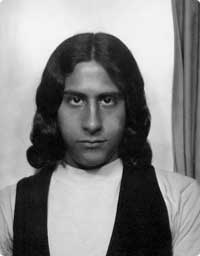
Richard traveled to Europe with his childhood friend Gary Liss. Being penniless, they stayed with anyone who would take them in, and often survived on just bread and cheese. To cover basic expenses, Richard played the harmonica on the street and collected alms. In Amsterdam, Richard met Hare Krishnas once again and spent some time in a hippie commune. In England, he attended the rock festival Isle of Wight on the Isle of Wight on 30 August 1970 – thereby, witnessing one of Jimi Hendrix's last performances.
During his travels, Richard read books on Eastern spirituality and the Bible, which he had brought from America. He loved to attend Christian churches and monasteries, and never missed an opportunity to talk with the priests and monks. In Rome, Richard met with Franciscan friars, with whom he had a long conversation about Jesus Christ and the relationship between Christianity and Judaism. Richard and Gary also attended the speech of the pope in the Vatican. They saw the Catholic monks meditating in the catacombs of the monastery, among the skeletons of their predecessors, and heard from one of them the frailty of the material body. After parting from his friend for a while, Richard de a pilgrimage to Assisi, visiting places associated with the life of the great Catholic saint Francis of Assisi.
In Athens, Richard and Gary first made their living by giving blood, and then, together with a Swiss violinist and French guitarist, playing music and collecting alms on the street. After the police forbade them to do so and confiscated their earnings, Richard and Gary went to the island of Crete, where he lived in a cave by the sea. By that time, Richard has little interest in a carefree way of life and ideals of the hippies; he was increasingly drawn to the spiritual life.
One morning, while meditating and praying on top of a rock, Richard heard an inner voice that urged him to go to India. On the same morning, the inner voice directed Gary to Israel. After parting with his friend, Richard hit the road. He had neither money nor a travel plan. But he firmly believed that by hitchhiking eastwards, he could get to the country that has answers to his prayers.
Having met in Athens two hippies, who also sought East, Richard joined them to India by the (then popular among the hippie) route through Turkey, Iran, Afghanistan and Pakistan. In Turkey, they were met with great difficulty, because at that time there was a raging cholera epidemic. After a narrow escape from bandits in Istanbul, they continued their journey by bus through Ankara to the border with Iran. In Tehran, they arrived during Ramadan. As Richard had developed an interest in Islam, he parted with his friends and stayed for a few days in Mashhad – an important place of pilgrimage for Shia Muslims. In the mausoleum of Imam Reza, Richard met an English-speaking Muslim, who explained the basics of Islam and Muslim customs.
Upon arrival in Afghanistan, Richard spent a few days in Herat, where a poor Afghan family gave him shelter. Here, Richard experienced his first culture shock – watching the Afghans happy, despite miserable poverty. Upon arrival in Kandahar, Richard met on the street, a blind boy who spent long hours singing songs about the love of God. To Richard, this boy seemed the happiest man he had ever met. This meeting left a deep impression on Richard and made him reflect on the nature of happiness. In Kandahar, Richard also experienced the strongest narcotic experience in his life, prompting him to vow never to take drugs. In Kabul, a young Dutch girl tried to seduce him, and even tried to force him to indulge in sexual connections. As sex seemed inconsistent with spiritual quest, Richard rejected her advances, vowing to stay celibate.
1970-1972: India – In search of a guru
In India, Richard arrived in December 1970. Watching cows freely walking around in Delhi, he felt an aversion to meat and became a vegetarian. In Delhi, Richard took part in the "World Conference of Yoga", which gathered more than 800 gurus, yogis, sages and pundits. Richard met with renowned yogi, founder of the Himalayan Institute, Swami Rama. When Richard asked him for blessings, Swami Rama replied that Richard's spiritual progress will continue to be based on communion with saintly persons, who will help him to overcome all obstacles on the spiritual path.
Richard also met Swami Satchidananda – known disciple of Swami Sivananda. Swami Satchidananda explained him the basic meaning of yoga and urged him not to look for shortcomings in others, and always focus on the good qualities. Satchidananda blessed Richard that he may "discover the treasure of his heart". Richard also attended a series of lectures by Indian guru and philosopher Jiddu Krishnamurti, who was known for being able to answer any question and to crush any argument. From Krishnamurti, Richard learned that spiritual life cannot be superficial, as being attached to external things and rituals, people often forget the main purpose of spiritual practice – the cleansing of one's heart.
Last day of the conference was held in Vigyan Bhavana – the largest concert hall in New Delhi. The event brought together more than 3,000 people. The conference ended with the gurus literally fighting over the microphone, so they could convince the audience that their path was the best.
In January 1971, Richard went to the Himalayas in search of a guru. Upon arrival in Rishikesh, he stopped for a few days in the "Divine Life Society" – an ashram, founded by Swami Sivananda. Richard spoke at length with Sivananda's student, Swami Chidananda, who led the ashram after the death of his guru. Chidananda convinced Richard of the need to practice japa meditation – chanting mantras on rosary. Richard found a secluded spot on the banks of the Ganges, where for eight to ten hours a day he chanted "Hare Krishna" and other mantras. Soon, he met a sadhu, at whose request Richard threw all his western clothes in the waters of the Ganges, and received in return a simple garment of a Hindu ascetic. The sadhu blessed Richard that the Ganges will prove to be his mother.
Determined to purify his existence, Richard began to practice severe austerities. Every day for a month, from sunrise to sunset, he meditated sitting on a rock in the middle of the Ganges. He only ate raw vegetables, fruits and nuts. When the desire to play the harmonica distracted him from the practice of meditation, he, without hesitation, threw his beloved harmonica in the waters of the sacred river.
In Rishikesh, Richard also became acquainted with a sadhu, who lived in a cave on the hillside. Seeing the sincerity of an American youth, the sadhu taught Richard new techniques of meditation.
Unable to find a guru in the Himalayas, Richard continued to wander in India. For a while, he lived among the Shaivites in Varanasi and among Buddhist monks in Bodh Gaya – the place where Buddha attained enlightenment. Upon arrival in Bombay, Richard saw a poster announcing a series of festivals by the American Hare Krishnas and their spiritual master A. C. Bhaktivedanta Swami Prabhupada. Out of curiosity, Richard went to the Hare Krishna program the same evening, where he heard Prabhupada for the first time. Prabhupada's lectures made a big impression on Richard, and he attended each night, arriving well before the program began to sit as close as possible to Prabhupada and listen to him. The Hare Krishnas strongly preached to their hippie-countryman, but Richard was not yet ready to listen to them. "He believed that all paths lead to God and did not understand the need to particularly follow Prabhupada and his followers".
After parting with the Hare Krishnas, Richard continued his wanderings in India, traveling "from ashram to ashram and guru to guru". Few months later, he was in Mathura – a holy site for Vaishnavas – where according to legends, Krishna was born. The day of his arrival in this holy city coincided with the birth anniversary of Krishna – Krishna Janmashtami. At the time, Richard lived in Vrindavan, close to Mathura, where Hindus believe Krishna spent his childhood. In Vrindavan, Richard stayed in the ashram of famous Hare Krishna guru and Prabhupada's godbrother Swami Bon, who affectionately named him Ratheen Krishna Das. By that time, Richard looked like a real Indian hermit with his body skinny from poor nutrition and dreadlocks on his head.
A few months later, Prabhupada came to Vrindavan with a group of American students. Listening to a lecture of the Hare Krishna guru, Richard came to the conclusion that the Gaudiya Vaishnava philosophy was the most perfect and that Prabhupada was a person, who truly loved God. The sight of Prabhupada singing Bengali bhajans with strong religious feeling left a strong impression on Richard. In his heart, Richard felt that Prabhupada was the greatest of all gurus and saints he met during all his wanderings in India., Prabhupada answered all of Richard's questions, backing up each answer with scriptural quotations. Richard also felt that Prabhupada walked his talk. However, Richard decided not to join Krishna at that time and remained in Vrindavan after the departure of Prabhupada and his disciples.
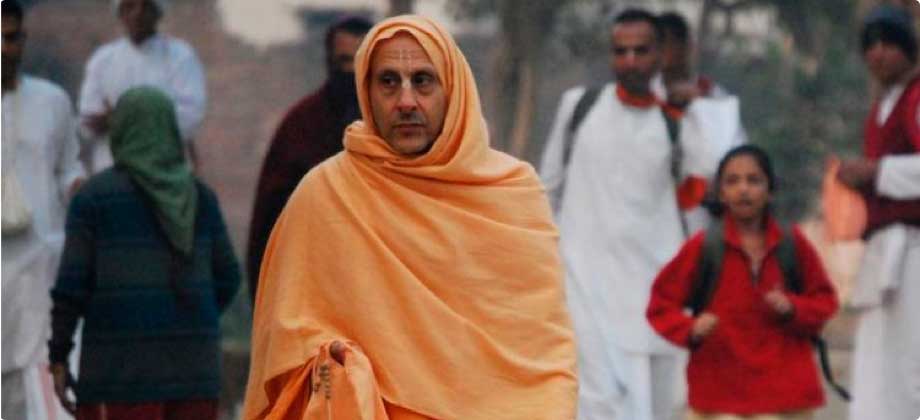
1972-1973: Back to America, Diksha
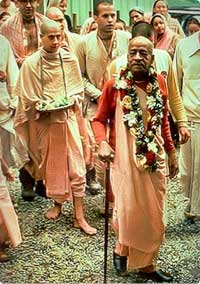
In the spring of 1972, the Indian government refused to extend Richard's visa, forcing him to return to America. After spending a few weeks in a Krishna temple in Amsterdam and in the Radha Krishna Temple in London, Richard returned to his parents, who by then had moved from Chicago to Miami. Soon, he again came into contact with the Hare Krishnas, and went to New York, where he met Prabhupada, who was in town for a few days en route to India. Richard wanted to go back to India, but Prabhupada asked him to stay in America, and assist in the development of the New Vrindaban community, under the guidance of Kirtanananda Swami. Richard followed Prabhupada's counsel and settled in New Vrindaban, caring for cows and reading Prabhupada's books in his spare time. Convinced by the philosophy set forth in the books and personal examples of those living in the New Vrindaban community, Richard finally decided to accept Prabhupada as his guru. On 11 February 1973, he accepted Harinam initiation from Prabhupada [via Kirtanananda Swami as officating ritvik (priest)] receiving the name Radhanatha Dasa.
1973-1983: New Vrindaban, Sannyasa
The next six years Radhanath never left New Vrindaban, contributing in developing the community. At that time, life there was very austere. In cold winters, the community members carried out without heating and hot water, bathing with ice-cold water. Radhanath strictly followed the Vaishnava spiritual practices, grazed cows and served the temple deities. On 1 August 1976 Radhanath received second initiation as a brahmana from Prabhupada (via Vegavan Das as officiating ritvik);
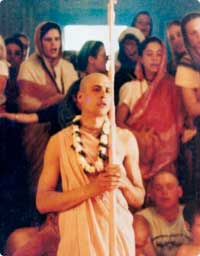
In the first half of the 1980s, Radhanath lectured at several universities in Ohio and Pennsylvania, and conducted courses on vegetarian cooking. In early 1982, a community leader – Kirtanananda Swami – offered Radhanath to take sannyasa (the way of life of renunciation). Though hesitant at first, arguing that the honor and respect that is traditionally conferred upon sannyasis will interfere with his spiritual life, Radhanath eventually agreed after persuasion from Kirtanananda and others. The sannyasa initiation ceremony of Radhanatha was held in May 1982 in New Vrindaban. On accepting the vows of lifelong renunciation, Radhanath received the title of "swami", and since then is known as "Radhanath Swami".
Henry Doktorski, a former resident of New Vrindaban, claimed to have solid evidence in his 2018 book, Killing For Krishna, that in 1986 Radhanath Swami was "directly involved" in the conspiracy to murder Steven Bryant (Sulochan Dasa), a former New Vrindavan resident who in the year before his death published a book, The Guru Business, which accused Kirtanananda Swami of deviating from ISKCON teachings and of condoning illegal and immoral activity. According to Henry Doktorski, at the time many at New Vrindaban regarded Radhanath Swami as the second-most spiritually advanced at the community. He was subpoenaed and appeared before the Federal Grand Jury in Elkins, West Virginia, on December 7, 1989, but was not charged in the conspiracy to murder Steven Bryant. Radhanath Swami has consistently denied any involvement in the conspiracy. According to him, "Every single allegation against me is totally false. I was not involved in any criminal activity."
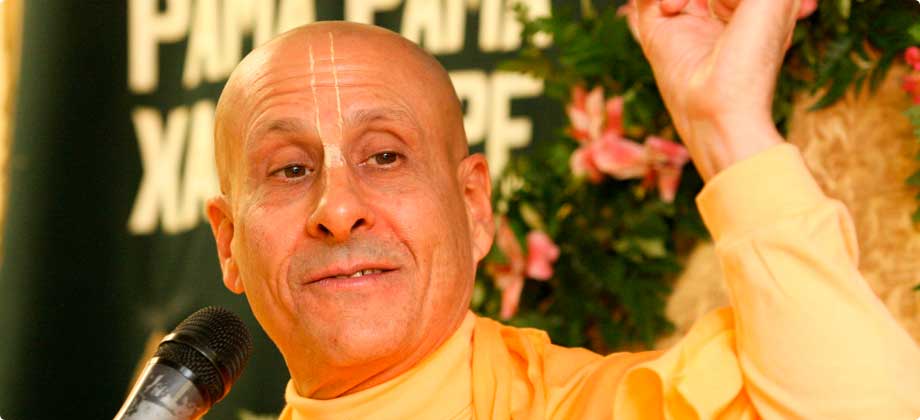
1986-present: Leadership in ISKCON and Socially-engaged Spiritual Activities
In 1983, for the first time after many years, Radhanath Swami made a pilgrimage to India, where he met some of his old friends. In 1986, he chose Bombay as his base, where he established the Radha Gopinath Temple. In 1998, he was instrumental in launching the Bhaktivedanta Hospital. In 2004, at the initiative of Radhanath Swami, the Radha Gopinath Temple started a charitable mission to distribute free vegetarian meals to children from low-income families enrolled in schools in Bombay. In the 2000s, yet another initiative of Radhanath Swami resulted in "Govardhan Ecovillage" in Maharashtra.
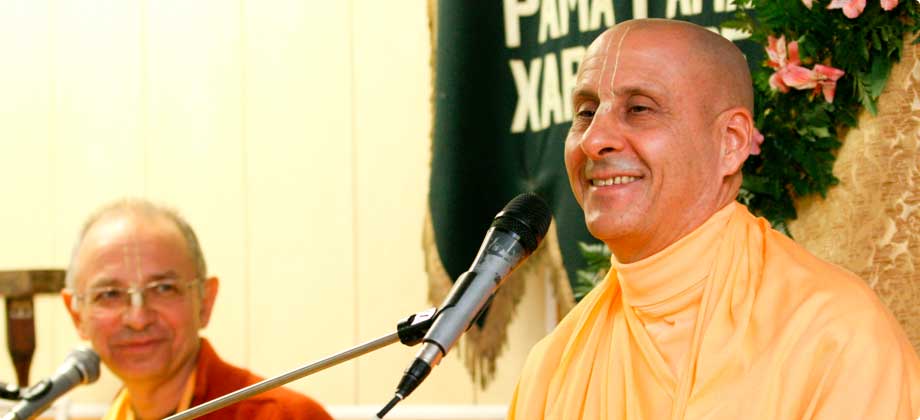
In 1987, Governing Body Commission of ISKCON resolved to expel Kirtanananda Swami from ISKCON. The following year all members of the community close to Kirtanananda Swami – which included Radhanath Swami – were also expelled from ISKCON. In 1994, Radhanath Swami and the Radha Gopinath Temple headed by him were formally accepted back in ISKCON. In the same year, Radhanath Swami became one of the leaders of ISKCON, and began to serve as a member of the Governing Body Commission and an initiating guru. In 1995-2010, Radhanath Swami led ISKCON in Maharashtra (1995-2010), Goa (2002-2010), Daman and Diu (2002-2010), West Virginia (1995-2007), Ohio (1998-2007 ), Kentucky (1998-2007), Italy (2002–present) and Belgaum (1995-2010).
